Parkside Parenting Partnership Exploratory Data Analysis
EDA of Initial Data
The initial data I have to use came from the PPP membership database. Further analysis, such as comparisons to neighborhood demographic shifts, will require additional data which I will detail separately.
When do members join?
Typically membership is fairly even through the year with November and December lagging as the lowest months for new members joining. Perhaps because of these softer numbers January tends to be stronger than most for new members.
New families also seem to join in the summer months, largely for nanny recommendations.
This year the summer swell was unusually strong as nearly half of the year’s new families joined between May and July.
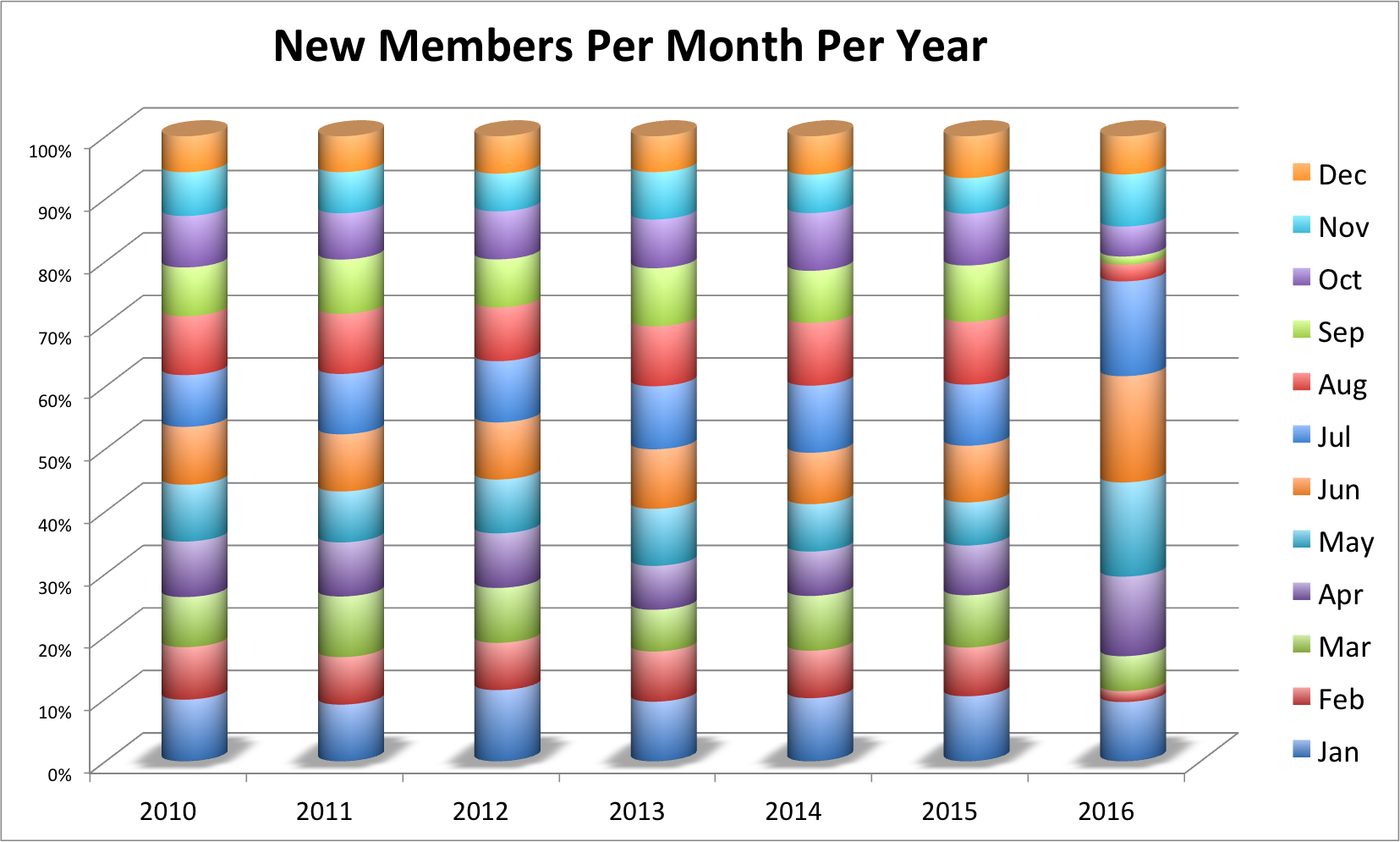
How many children do PPP families have?
Most families have had only one child, but the number of two children families has been very strong as well. I had been toying with the idea of just using 1-child families since that would be easier for some comparisons, but that is clearly not an option here. The good news is that there are very few 3+ families so the fact that we don’t have birth dates past #2 is less of an issue.
Please note that the original distribution for this feature included a “more than four” category. There were few enough families of that category that I merged them with the 4 (to make 4+)
Additionally the 0.5 column is for families who had a child on the way, through pregnancy or adoption, but were not yet parents.
Mean number of children for Parkside Parenting Partnership families has been 1.37
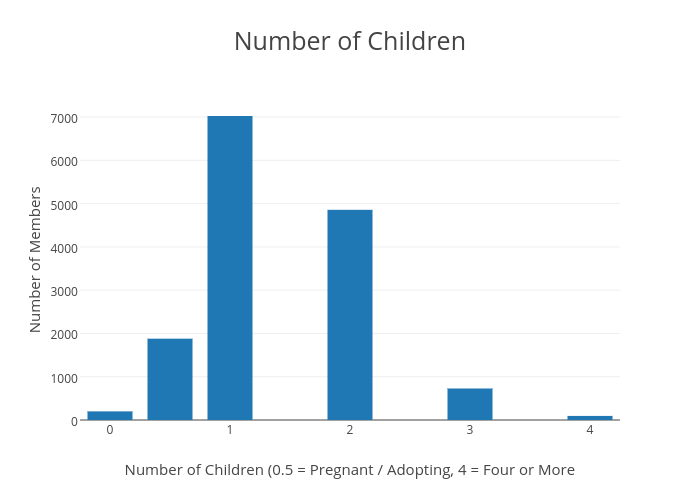
Looking at how the composition of the membership has changed over time in terms of number of children, the Parkside Parenting Partnership is increasingly comprised of families with one child.
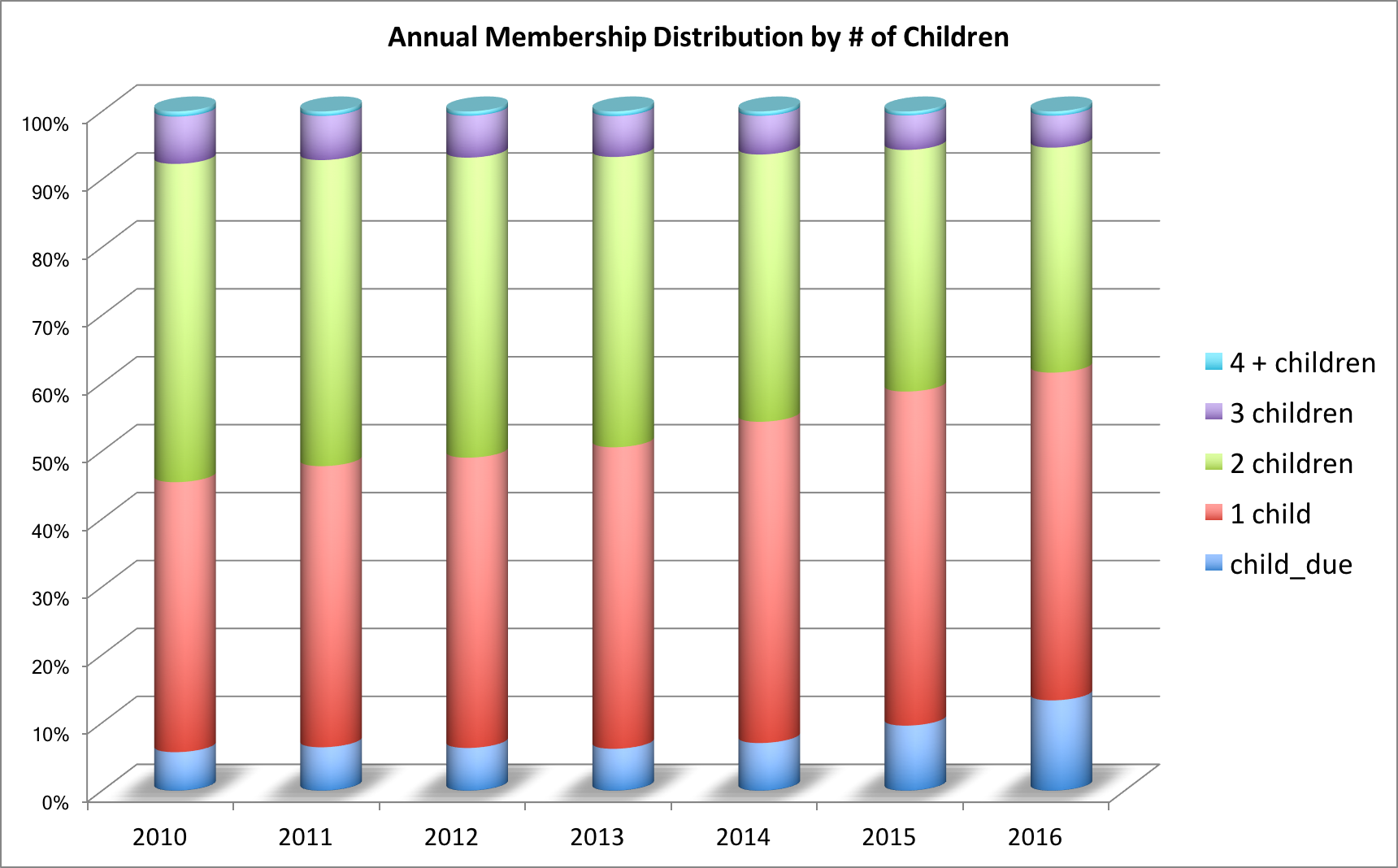
When are members’ children born?
Birth patterns are very similar for first and second children, never more than 50 children between number born in each month.
Please note, this does not mean that individual families have children in the same month, just that overall patterns are similar.
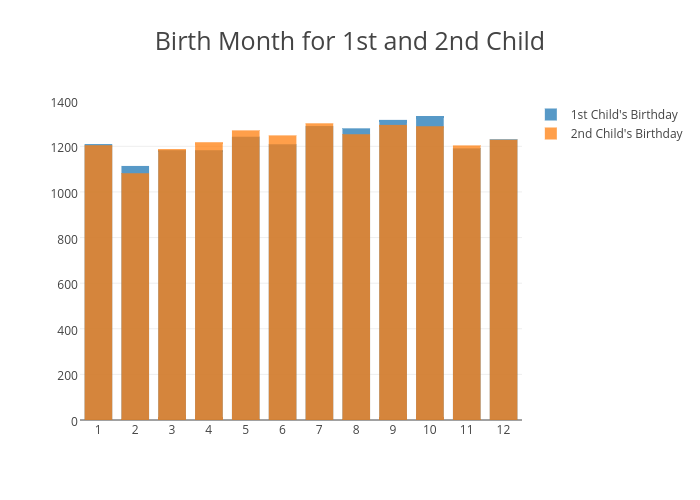
How did members find out about the Parkside Parenting Partnership?
Far and away the top means of finding PPP was through a friend/neighbor who is a member of the group.
Unfortunately it looks like “I don’t remember / Other” is the second most likely response but #3, Found it through a Google search, is informative.
Data Dictionary
| Label | Definition |
|---|---|
| 0 | A PPP member I don't know told me about it |
| 1 | A PPPP member who is a friend/neighbor |
| 2 | Found it through Yahoo |
| 3 | Found it through a Google search |
| 4 | Heard about it on another online parenting group (Urban Baby, etc.) |
| 5 | Heard about it through a magazine, newspaper, blog |
| 6 | I don’t remember / Other |
| 7 | NA |

Finding PPP through a Google search has been fairly consistent in most years, following a similar pattern to joining the group in most years.
In 2016 the likelihood of a family having found PPP this way has been much less until May, dropping off again after July, mirroring the pattern seen for new families joining this year.
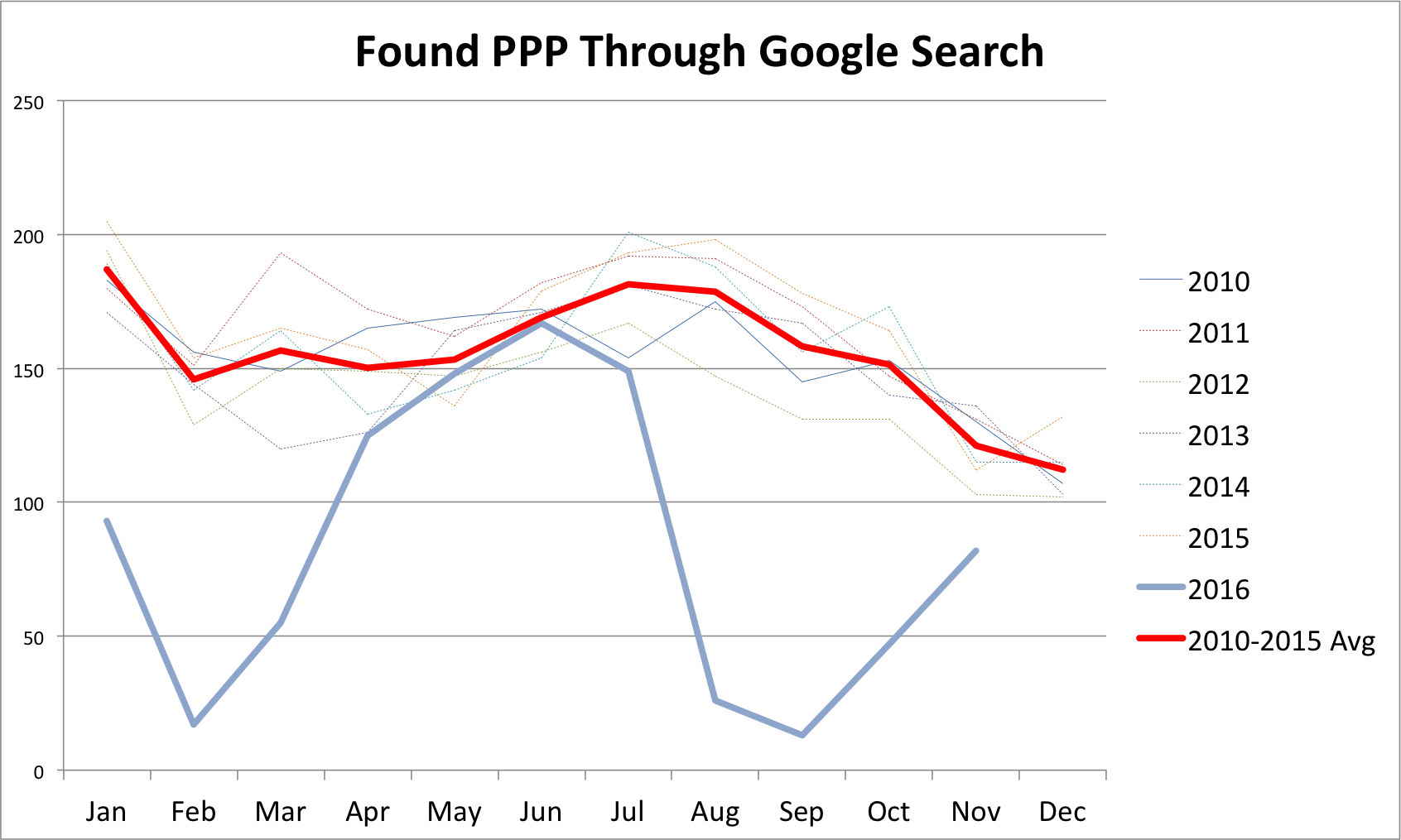
Interestingly, the trend of searches for the group as reported by Google are very different than the responses from families joining PPP. Searches in general have been on the decline, though this may merely suggest that people say they found PPP through Google when they just meant that they found it online somehow.
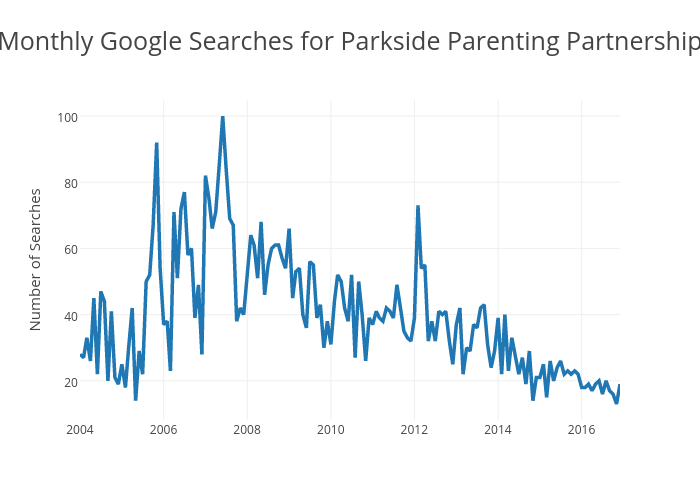
How popular is each type of membership?
Far and away the top membership option is annual
| Label | Definition |
|---|---|
| 0 | 1 year membership ($40) |
| 1 | 2 Year Membership ($75) |
| 2 | 3 year membership ($110) |
| 3 | 5 year membership ($175) |
| 4 | Complimentary |
| 5 | Lifetime Member |
| 6 | Trial Membership |

In terms of percent of all families, 1-year memberships have been on a slow decline over the years with 2-year memberships on the rise.
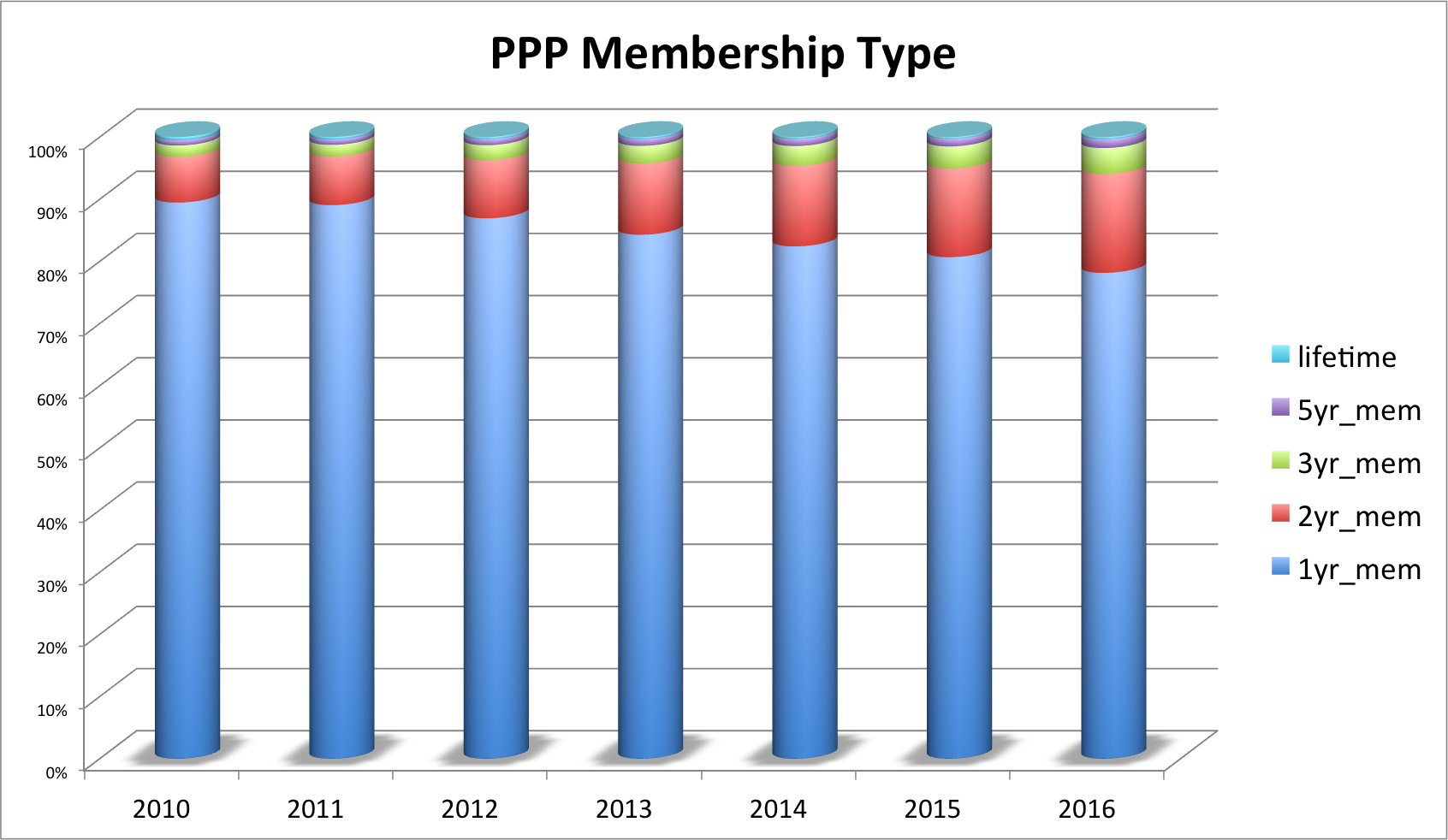
How long do people keep their memberships?
Most members have only stayed for a year.
Still, enough have multi-year memberships that the average is 2.83 years

When do members join the Parkside Parenting Partnership, relative to the arrival of their child?
Looking just at members who show a join date at most 12 years before the child’s arrival or less than 2 years prior, we can see that the average (median) member joins about 5 months after their first child is born. This average includes people who join before their children are due.
About 2/3 of members join after their children arrived.
Among these members the average join date is 22 months old. That means that half of members who join after their children have arrived do so after age 22 months.
The 1st quartile in this measurement, the 25% earliest joins post arrival, was at 4.5 months old. That is a large drop-off and presents a potential target for membership.
Among members who join before their children arrive, they do so 3.6 months before the arrival. The 1st quartile here is 5.3 months so there isn’t as much opportunity to reach out here.
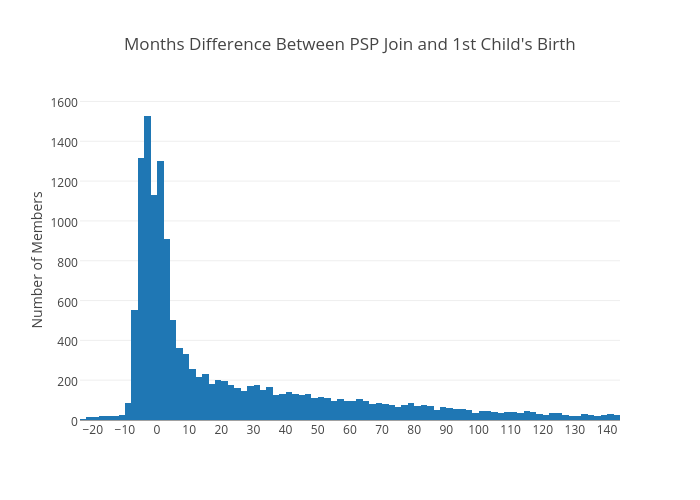
Over time we can see that it has become more and more popular for people to join PPP while they are still waiting for their child to be born or adopted, representing over half of the members joining in 2016.
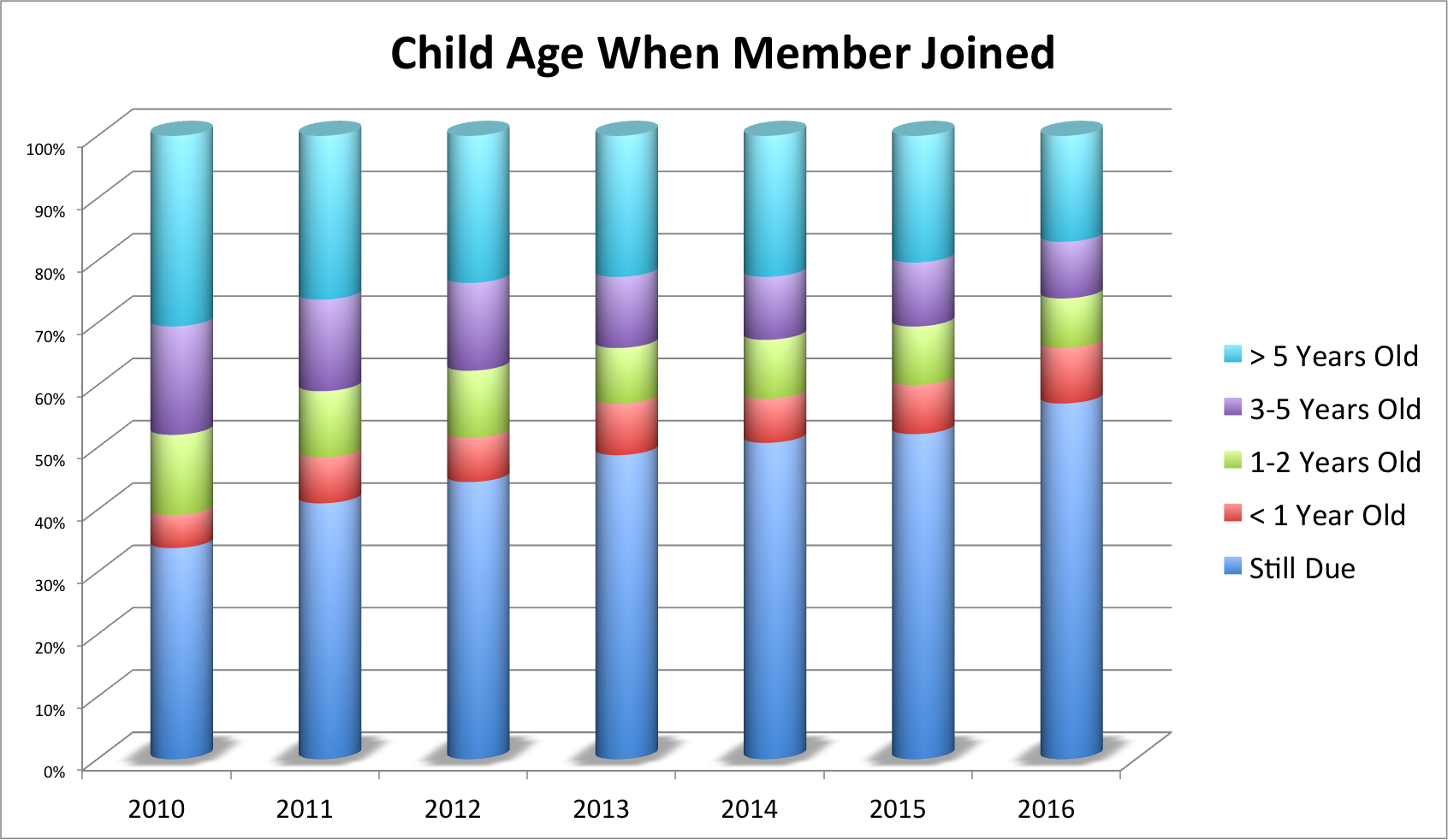
When do memberships lapse, relative to the arrival of members’ latest children?
Looking only at expired memberships, they tend to last about 22 months after their second child was born (if applicable–if not then 1st child birth date was used).
This is a very interesting number as it is also the median age at which new members join (join date versus 1st child’s birth). This suggests there may be a “ships in the night” pattern and makes it doubly important that Parenting Network concentrates on either increasing or emphasizing value for parents of children under 2 years old in order to both retain membership past this age and to bring parents in a little sooner.
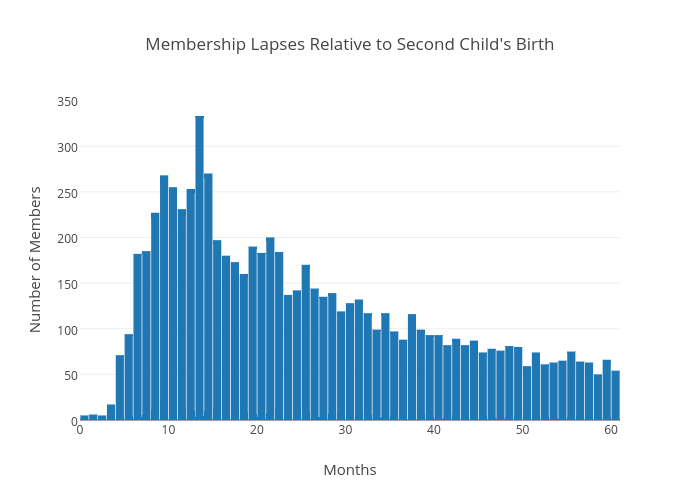
It appears that families are staying a little longer relative to their children’s ages with a slight uptick in expirations after age 5 and slightly fewer in terms of 1-2 year olds.
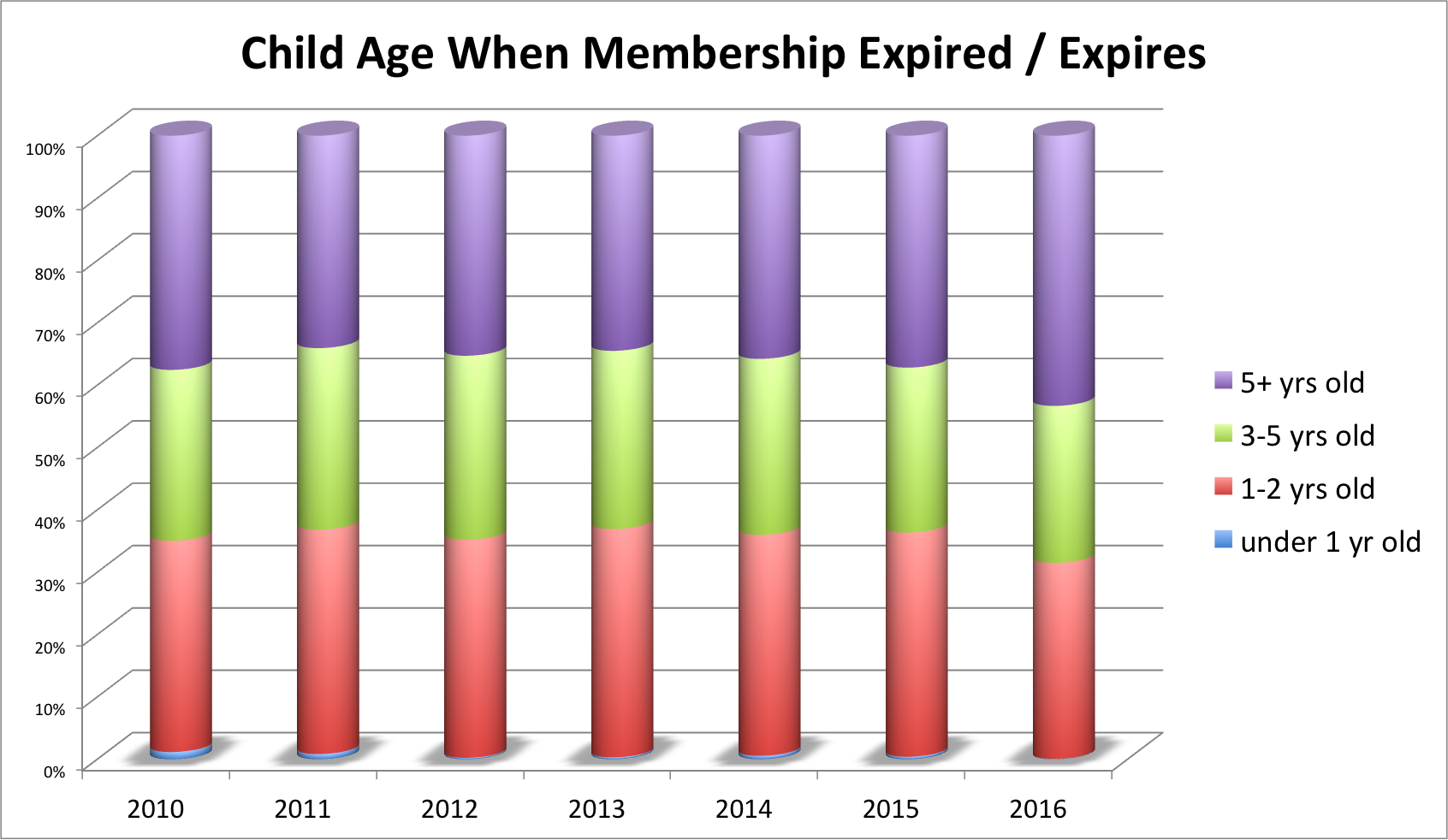
Additional posts on this project can be found at:
Parkside Parenting Partnership Project Introduction
Parkside Parenting Partnership Model and Clustering
